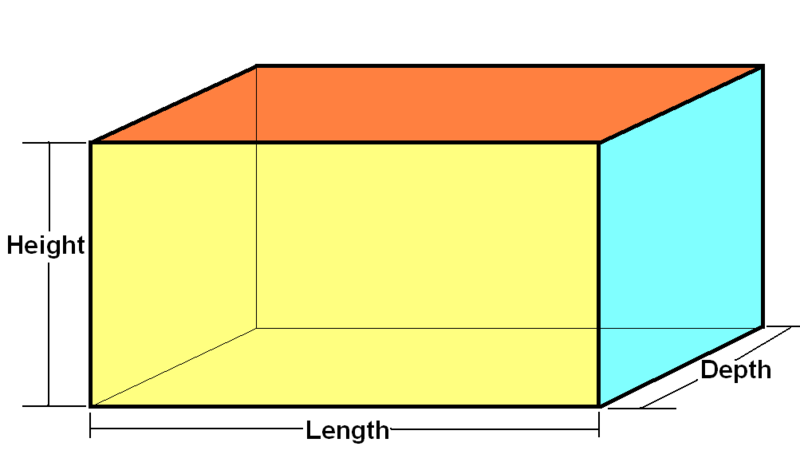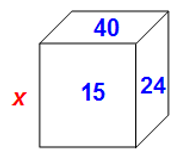Events & Promotions
|
|

GMAT Club Daily Prep
Thank you for using the timer - this advanced tool can estimate your performance and suggest more practice questions. We have subscribed you to Daily Prep Questions via email.
Customized
for You
Track
Your Progress
Practice
Pays
Not interested in getting valuable practice questions and articles delivered to your email? No problem, unsubscribe here.
- Nov 19
12:30 PM EST
-01:30 PM EST
Learn how Keshav, a Chartered Accountant, scored an impressive 705 on GMAT in just 30 days with GMATWhiz's expert guidance. In this video, he shares preparation tips and strategies that worked for him, including the mock, time management, and more - Nov 20
07:30 AM PST
-08:30 AM PST
Learn what truly sets the UC Riverside MBA apart and how it helps in your professional growth - Nov 20
01:30 PM EST
-02:30 PM IST
Learn how Kamakshi achieved a GMAT 675 with an impressive 96th %ile in Data Insights. Discover the unique methods and exam strategies that helped her excel in DI along with other sections for a balanced and high score. - Nov 22
11:00 AM IST
-01:00 PM IST
Do RC/MSR passages scare you? e-GMAT is conducting a masterclass to help you learn – Learn effective reading strategies Tackle difficult RC & MSR with confidence Excel in timed test environment - Nov 23
11:00 AM IST
-01:00 PM IST
Attend this free GMAT Algebra Webinar and learn how to master the most challenging Inequalities and Absolute Value problems with ease. - Nov 24
07:00 PM PST
-08:00 PM PST
Full-length FE mock with insightful analytics, weakness diagnosis, and video explanations! - Nov 25
10:00 AM EST
-11:00 AM EST
Prefer video-based learning? The Target Test Prep OnDemand course is a one-of-a-kind video masterclass featuring 400 hours of lecture-style teaching by Scott Woodbury-Stewart, founder of Target Test Prep and one of the most accomplished GMAT instructors.
C
Be sure to select an answer first to save it in the Error Log before revealing the correct answer (OA)!
Difficulty:
 75%
(hard)
75%
(hard)
Question Stats:
52% (01:51) correct 48%
(01:49)
wrong
48%
(01:49)
wrong  based on 4431
sessions
based on 4431
sessions
History
Date
Time
Result
Not Attempted Yet
What is the volume of a certain rectangular solid?
(1) Two adjacent faces of the solid have areas 15 and 24, respectively.
(2) Each of two opposite faces of the solid has area 40.
(1) Two adjacent faces of the solid have areas 15 and 24, respectively.
(2) Each of two opposite faces of the solid has area 40.
Kudos
Bookmarks
This question is from the Official Guide and the Official Answer is C.
About the rectangular solid:

In a rectangular solid, all angles are right angles, and opposite faces are equal, so a rectangular solid can have a maximum of 3 different areas for its faces; on the diagram: yellow, green, and red faces can have different areas. I say at max because, for example, a rectangular solid can be a cube and in this case, it'll have all faces equal. Also, it's possible to have only 2 different areas for the faces, for example, when the base is square and the height does not equal the side of this square.
The volume of a rectangular solid is Volume = Length * Height * Depth.
BACK TO THE ORIGINAL QUESTION:
What is the volume of a certain rectangular solid?
(1) Two adjacent faces of the solid have areas 15 and 24, respectively.
Let the two adjacent faces be the blue and yellow faces on the diagram --> \(blue = dh = 15\) and \(yellow = lh = 24\) --> we have 2 equations with 3 unknowns; not sufficient to calculate the value of each or the product of the unknowns (\(V = lhd\)).
To elaborate more:
If \(blue = dh = 151 = 15\) and \(yellow = lh = 241 = 24\) then \(V = lhd = 24115 = 360\);
If \(blue = dh = 53 = 15\) and \(yellow = lh = 83 = 24\) then \(V = lhd = 835 = 120\).
Two different answer, hence not sufficient.
(2) Each of two opposite faces of the solid has area 40.
The above just gives the areas of two opposite faces, so clearly insufficient.
(1)+(2) From (1): \(blue = dh = 15\), \(yellow = lh = 24\), and from (2) each of two opposite faces of the solid has an area of 40, so it must be the red one: \(red = dl = 40\) --> here we have 3 distinct linear equations with 3 unknowns; hence we can find the values of each and thus can calculate \(V = lhd\). Sufficient.
To show how it can be done: multiply these 3 equations --> \(l^2h^2d^2 = (lhd)^2 = 15*24*40 = 24^25^2\) --> \(V = lhd = 24*5 = 120\).
Answer: C.
Hope it helps.

800px-Cuboid.png [ 22.06 KiB | Viewed 91358 times ]
About the rectangular solid:
In a rectangular solid, all angles are right angles, and opposite faces are equal, so a rectangular solid can have a maximum of 3 different areas for its faces; on the diagram: yellow, green, and red faces can have different areas. I say at max because, for example, a rectangular solid can be a cube and in this case, it'll have all faces equal. Also, it's possible to have only 2 different areas for the faces, for example, when the base is square and the height does not equal the side of this square.
The volume of a rectangular solid is Volume = Length * Height * Depth.
BACK TO THE ORIGINAL QUESTION:
What is the volume of a certain rectangular solid?
(1) Two adjacent faces of the solid have areas 15 and 24, respectively.
Let the two adjacent faces be the blue and yellow faces on the diagram --> \(blue = dh = 15\) and \(yellow = lh = 24\) --> we have 2 equations with 3 unknowns; not sufficient to calculate the value of each or the product of the unknowns (\(V = lhd\)).
To elaborate more:
If \(blue = dh = 151 = 15\) and \(yellow = lh = 241 = 24\) then \(V = lhd = 24115 = 360\);
If \(blue = dh = 53 = 15\) and \(yellow = lh = 83 = 24\) then \(V = lhd = 835 = 120\).
Two different answer, hence not sufficient.
(2) Each of two opposite faces of the solid has area 40.
The above just gives the areas of two opposite faces, so clearly insufficient.
(1)+(2) From (1): \(blue = dh = 15\), \(yellow = lh = 24\), and from (2) each of two opposite faces of the solid has an area of 40, so it must be the red one: \(red = dl = 40\) --> here we have 3 distinct linear equations with 3 unknowns; hence we can find the values of each and thus can calculate \(V = lhd\). Sufficient.
To show how it can be done: multiply these 3 equations --> \(l^2h^2d^2 = (lhd)^2 = 15*24*40 = 24^25^2\) --> \(V = lhd = 24*5 = 120\).
Answer: C.
Hope it helps.
Attachment:
800px-Cuboid.png [ 22.06 KiB | Viewed 91358 times ]
Kudos
Bookmarks
1) Two adjacent faces of the slid have areas 15 & 24, respectively.
2) Each of the opposite faces of the solid has area 40.
Let the length of the sides be a,b,c. Areas of each of the sides will be ab,bc,ca and the volume is abc
1. ab=15 ac=24 From these we cannot get individual values of a,b,c or the volume. So INSUFFICIENT
2. bc=40. From this we cannot get the volume. -- INSUFFICIENT
Combining we have:
ab=15
ac=24
bc=40
multiplying the LHS and RHS, you get:
(ab)(ac)(bc)=15*24*40
(a^2)(b^2)(c^2)=14400
or abc=120=Volume
So, C is the answer
2) Each of the opposite faces of the solid has area 40.
Let the length of the sides be a,b,c. Areas of each of the sides will be ab,bc,ca and the volume is abc
1. ab=15 ac=24 From these we cannot get individual values of a,b,c or the volume. So INSUFFICIENT
2. bc=40. From this we cannot get the volume. -- INSUFFICIENT
Combining we have:
ab=15
ac=24
bc=40
multiplying the LHS and RHS, you get:
(ab)(ac)(bc)=15*24*40
(a^2)(b^2)(c^2)=14400
or abc=120=Volume
So, C is the answer

















